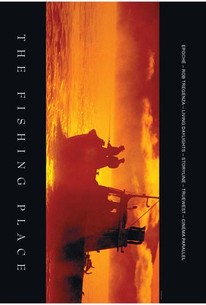The Fishing Place: A Tale of War, Redemption, and Moral Ambiguity
If you’re looking for a gripping narrative that weaves together themes of espionage, moral conflict, and the brutal realities of war, look no further than The Fishing Place. This film captures the essence of its setting during the German occupation of Norway, highlighting the complexities faced by its protagonist, Anna Kristiansen. For those interested in experiencing this gripping story, you can easily download the torrent and immerse yourself in a tale that is as thought-provoking as it is emotional.
The Setting: A Hydroelectric Town During World War II
The backdrop for The Fishing Place is the hydroelectric town of Notodden, a significant location during World War II. As Anna is sent to spy on Adam Honderich, a Lutheran minister of the German High Church, the film explores the intersections of faith, morality and resistance. The characters navigate a world of shifting loyalties and ideological divides, creating a compelling narrative that keeps viewers on the edge of their seats.
Anna Kristiansen: A Complex Protagonist
Anna Kristiansen’s character is fraught with moral dilemmas as she struggles with her newfound freedom, granted by a Norwegian Nazi officer. Her mission to spy on a priest suspected of resistance activity puts her in a precarious position where every choice she makes has dire consequences. As she delves into her mission, Anna must confront her own beliefs and the moral ambiguity of her situation.
Conflict and Redemption
The film’s exploration of conflict and redemption is central to its narrative arc. Anna’s journey reflects the broader struggles individuals face during wartime, where the lines between right and wrong blur. Her interactions with Adam Honderich reveal the profound impact of war on personal relationships and spiritual beliefs. The film raises poignant questions about the nature of faith, sacrifice, and the search for redemption amidst chaos.
The Role of Fishing: A Metaphor for Freedom
In The Fishing Place, fishing serves as a powerful metaphor for freedom and escape. When Adam Honderich goes fishing, it symbolizes a brief respite from the harsh realities of war. This activity offers a moment of peace and reflection, in stark contrast to the tension and danger surrounding Anna. The act of fishing becomes a touching symbol of hope, representing the possibility of finding solace even in the darkest of times.
Visually and thematically rich
The cinematography of The Fishing Place captures the stark beauty of the Norwegian landscapes, juxtaposing the serene natural environment with the harshness of human conflict. The thematic richness of the film is enhanced by its visual storytelling, which draws viewers into Anna’s internal struggles and the external pressures of her environment. The choice to set the film in a hydroelectric town adds layers to the narrative, reflecting the duality of progress and destruction experienced during the war.
The impact of war on culture
As Anna embarks on her mission, the film highlights the cultural changes that occur in Norway during the German occupation. The fusion of Norwegian and German influences creates a complex, rich and tense social fabric. This cultural backdrop is a key element in understanding the motivations of the characters and the choices they make throughout the film.
Conclusion: A film not to be missed
The Fishing Place is an evocative film that delves into the heart of the human experience during one of the darkest periods in history. Its exploration of moral ambiguity, the brutal realities of war, and the search for redemption resonates powerfully with audiences.




 11/32
11/32